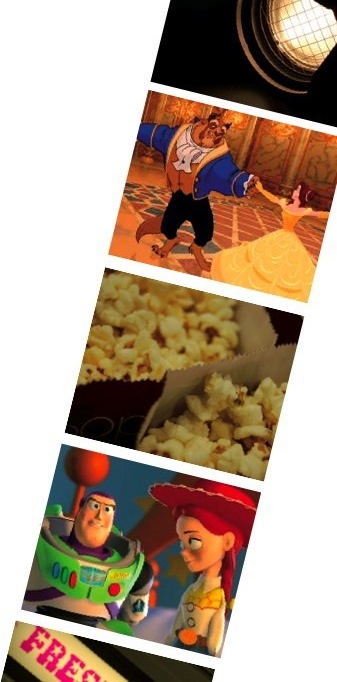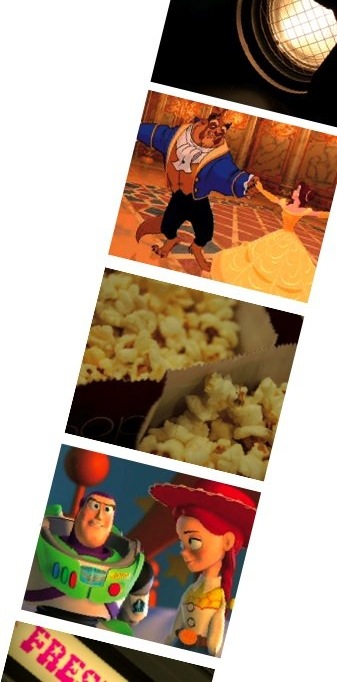Drew Bianchi on scarily-real computer animation, and the very humble alternative.
The room darkened as I sat between my parents, a bucket of popcorn in one hand and a tankard of cola in the other as an anticipated silence fell.
The curtains parted, as before my eyes an intricate ballet of movement and colour was sketched across the canvas of the screen. A world had been brought to life right here in front of me—a fantastic, terrifying world, where cutlery sang and danced, where lightning framed castles hid surprising secrets, and where it seemed anything was possible. And that world had been created with nothing more than pencils and paper.
The year was 1991, the film Disney’s Beauty and the Beast, the first Disney film I remember being taken to see at the cinema, and the only animated film to ever be nominated for a best picture Oscar. But back then, I didn’t care about the awards. My mind was set on something else. From leaving the cinema that evening, I knew what I wanted to do with my life. I determined to dig out my crayola crayons and become an animator.
Flash forward fourteen years, and things have changed quite a bit. There no longer is a young boy desperate to make his wax scribblings dance across the page. No more best picture nominations for animated features, thanks to a special animation award category. In fact there is very little hand drawn animation at all.
Instead, film makers are embracing new technology to present their work. This is not more apparent than in the field of 3D computer animation. Forget the dodgy items apparently flying out of the screen at you, the process actually consists of animators building models of their characters inside a computer. The models have moveable ‘skeletons’ allowing them to be puppeteered by the animator. Whereas previously entire movements of a character had to drawn repeatedly with intricate differentiations to allow smooth movement when shown in quick succession, now only the most important parts of a character’s movement, usually the start and end points, have to be fed into the computer, with it doing all the hard work involving vectors and sums. Sounds easy, but factor in the vast numbers of characters and scenes in any given movie, and you’ve still got a long process on your hands.
Still a full length feature made in such a way was an inevitability, and in 1995 a small, previously unheard of company called Pixar released the first full length computer animation about two lost toys. They rest, as they say, is history. Toy Story was a hit, quickly followed by A Bug’s Life (1998), Toy Story 2 (1999), Monsters Inc. (2001) and Finding Nemo (2003).
This revolutionary style of film seemed to allow family films to be watched by teenagers and adults, with characters more likely to ad lib a line aimed at the older audience than burst into a toe tapping Broadway baiting extravaganza
Such jokes are not exactly new to the animation process however, with Robin William’s ground breaking performance as the genie in Aladdin clearly paved the way for the turns of Eddie Murphy in the Shrek movies. The colourful backdrops of The Simpsons also fail to mask the biting wit and multiple pot shots at the idiocy abundant in small town Americana. Yet a more realistic style is perceived as aimed at a more sophisticated audience, who are flocking to see computer generated movies in droves.
And, as we know, in Hollywood, it’s not about making good films, but rather making what the public is perceived as desiring. Consequently more and more computer generated titles are pumped out every year to meet the ‘demand’ resulting in an abundance of mediocre titles like Hoodwinked and Happily N’ever After which attempt to flog that dead horse again and again.
The shift in dynamic has forced many traditional animators to take their skills to the three dimensional level. After working on a great deal of Disney productions, director Gary Trousdale jumped ship to Dreamworks Animation, a studio responsible for the popular Shrek series, where he has since been responsible for several computer generated projects such as Christmas special Shrek the Halls and a short involving the Madagascar penguins. Others, including fellow Disney director Kirk Wise, have been reluctant to change styles, taking jobs instead with foreign studios like Japanese giant Studio Ghibli, which enable them to continue practicing their art but allow fewer people to see it.
With fewer and fewer hand drawn cartoons produced, computer generated movies seem to be getting a bit too comfortable in the niche they’ve carved for themselves. They tend to forget about the most important things like story and character, and instead become obsessed with pushing boundaries. Already we’ve had photo real fur in Monsters Inc. and Ice Age, and almost real human avatars in sci-fi flop Final Fantasy: The Spirits Within. And people are beginning to notice. It can all go seriously wrong, as it did with the 90-minute nightmare that was The Polar Express (2004), or amazingly right, like last year’s Angelina’s-boobs-full Beowolf.
Such is the effect of a generation obsessed with high definition TV and games with better graphics than the real world that upon comparison between a computer generated character and an animated one, a normal person will automatically favour the former as the most sophisticated.
Assumptions like this are naturally unfair. Hand drawn animation can be both sleek and stylish, perhaps even more so than their computer generated rivals, as seen by some of the work of cartoon network genius Genndy Tartakovsky, the man responsible for shows like Samurai Jack and animated Star Wars spin-off The Clone Wars.
The decline of hand drawn animation could have its advantages however. It’s quickly becoming the cheap and far more expressive form of film making for quirky and indie film makers. Films like Persepolis, which shows the life of a young girl through the Iranian revolution, or the work of Japanese giant Studio Ghibli highlight this. With hand drawn animation, you don’t need to worry about whether the physics or budget allow the creation of fantastic worlds or moods—if you can draw it, it can exist.
However, animation fans desiring something a bit more mainstream (yes, you at the back) need not despair entirely. Film makers everywhere are dusting off their pencils and rescuing the skills previously thought to have been abandoned on the cutting room floor. This year’s shortlist for best animated film at the Oscars contains the first hand drawn film to be nominated since 2003 in the form of Persepolis, and after testing the waters with the short animated segment in last year’s subversive fairy tale Enchanted, Walt Disney Pictures intend to return to traditional hand drawn animation in 2009 with The Princess and the Frog.
It seems it’s finally time for the inner child to rejoice—and dig out the crayolas again.

